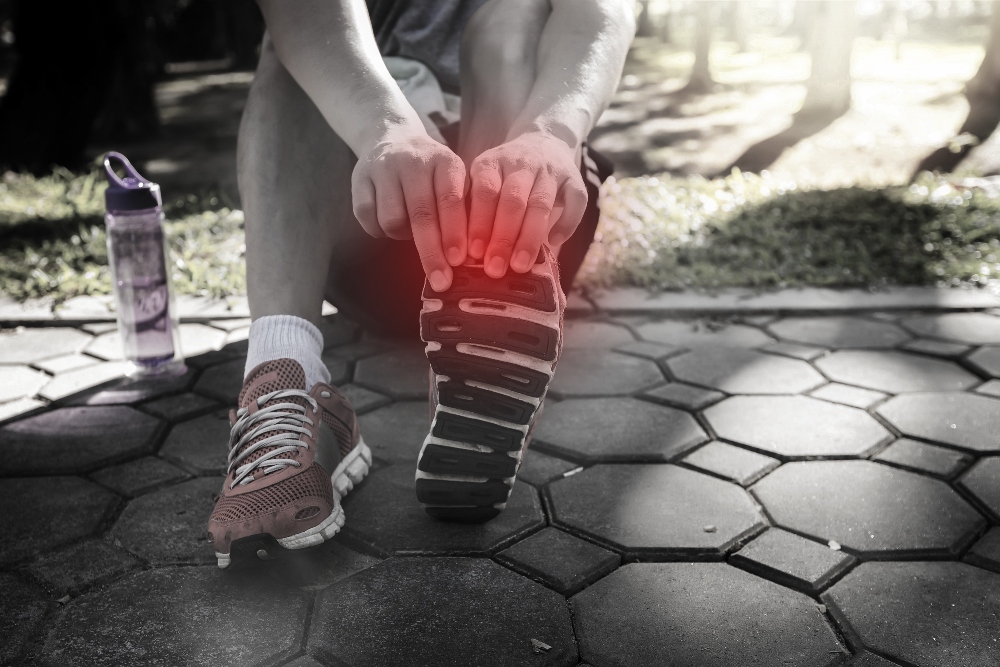What is a hammertoe? A hammertoe is a foot deformity that causes a toe to bend downward abnormally at the middle joint, causing the toe to bend downward, resembling the head of a hammer. This condition can be extremely painful and, if it is left untreated, it will get progressively worse.
So, what causes this troublesome condition? Overall, the underlying cause is an imbalance in the muscles that surround that middle toe joint. When one of the muscles is weaker, the toe will bend unnaturally. If the toe stays bent in this way, the muscles will eventually shorten and the ligaments will tighten – resulting in the toe not being able to straighten properly.
There are several factors that cause this imbalance, some of them avoidable. Read on to find the top 4 causes of hammertoe:
Hammertoe Cause #1 – Shoes that fit poorly, including heels
One of the top causes of hammertoe is wearing shoes that don’t fit your foot correctly. A shoe that is too small or has a toe box that is too narrow for your toes will force your toes into abnormal, flexed positions. We’re looking at you, pointy-toed high heels!

When you repeatedly wear a shoe that crams your toes into a too-small space, the toes may not be able to straighten to their normal position, even when barefoot.
Here are five shoe shopping tips for finding the right fit.
Hammertoe Cause #2 – Genetics and Gender
Women are far more likely to develop hammertoe than men. (This can probably be contributed to the fact that women are more likely to choose form over function with footwear – circling back to cause #1.) Aside from gender, hammertoe can be hereditary. If your mother had hammertoes, you may be more likely to develop them as well.
Another genetic factor that can contribute to hammertoes is toe length. If your second toe is longer than your big toe, a hammertoe is more likely to develop. Lastly, an unusually high arch of the foot can cause hammertoes. The toes are a major part of how you balance to stand, and if you have an extremely high arch, the toes may have to overcompensate, causing muscle imbalances.
Hammertoe Cause #3 – Trauma to the Toes
A toe that has been broken, sprained, severely jammed, or “stubbed” is more likely to develop hammertoes. It’s a persistent and common myth that nothing can be done for a broken toe, so many people don’t seek medical attention when they have an injury to their toe.
This can be permanently damaging; in many cases, the toe will be out of alignment from the injury, which, if not treated, will result in muscle imbalance, which can lead to hammertoes!

Hammertoe Cause #4 – Diseases like Arthritis and Diabetes
Arthritis and diabetes can make you more prone to foot problems in general, and hammertoe is no exception. Hammertoe can be an especially high-risk issue for those with diabetes, due to the degeneration of the nerves in the feet – you may be less aware that you are developing a serious problem, and you may be more prone to infection if a sore or blister forms on a hammertoe.
Regardless of the cause, the good news is hammertoe is a treatable condition. Depending on the severity, treatment can range from a simple change of footwear to exercises, and, in more severe cases, surgery to release the tight tendon may be necessary.
Suffering from hammertoe? Here are 5 Hammertoe Correction Tips for Sweet Relief.
For more information on hammertoe treatment, or for an appointment to evaluate your feet, contact the Foot and Ankle Group today!
Categorized in: Blog